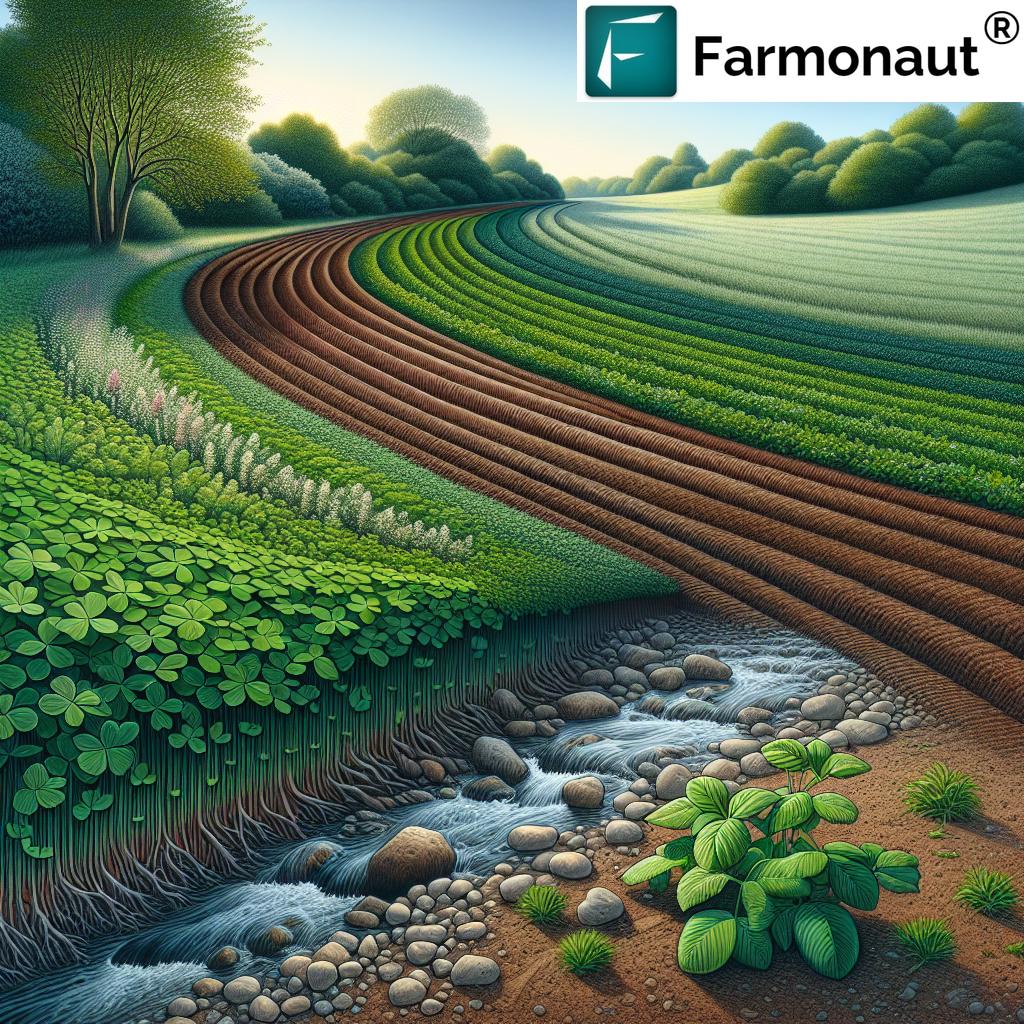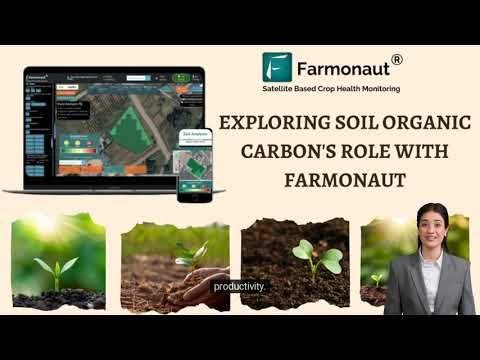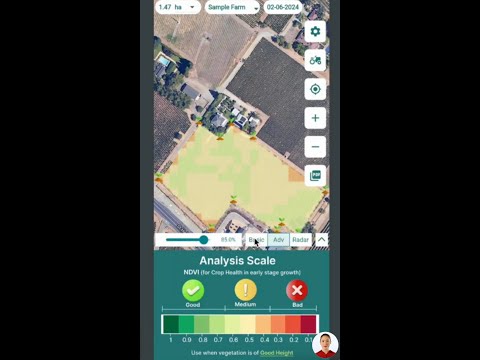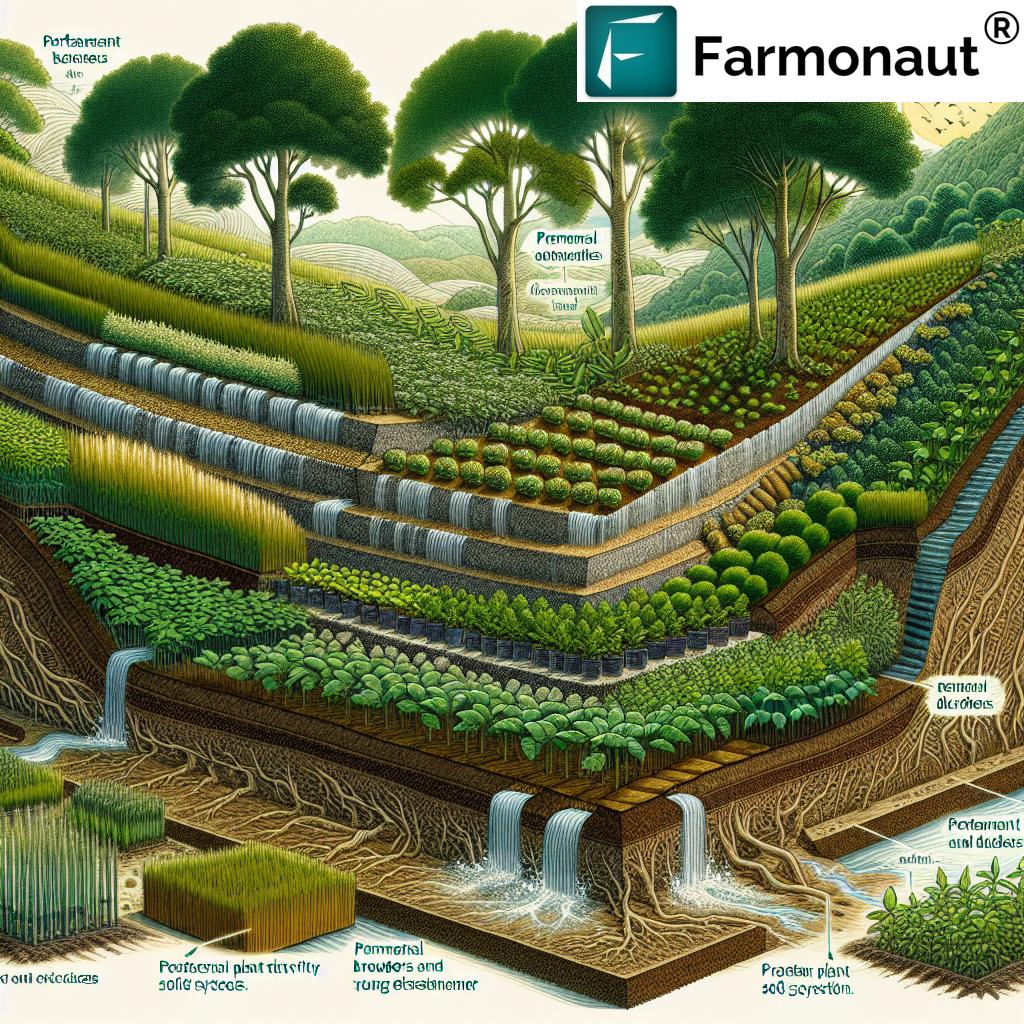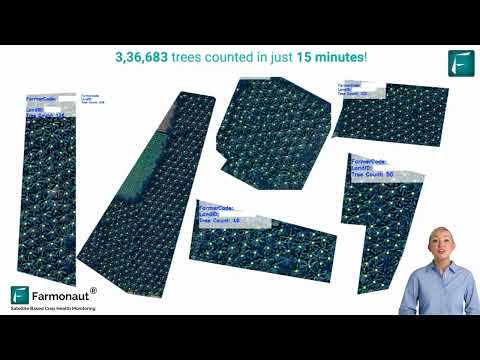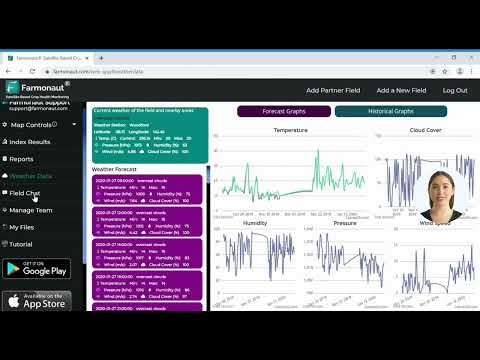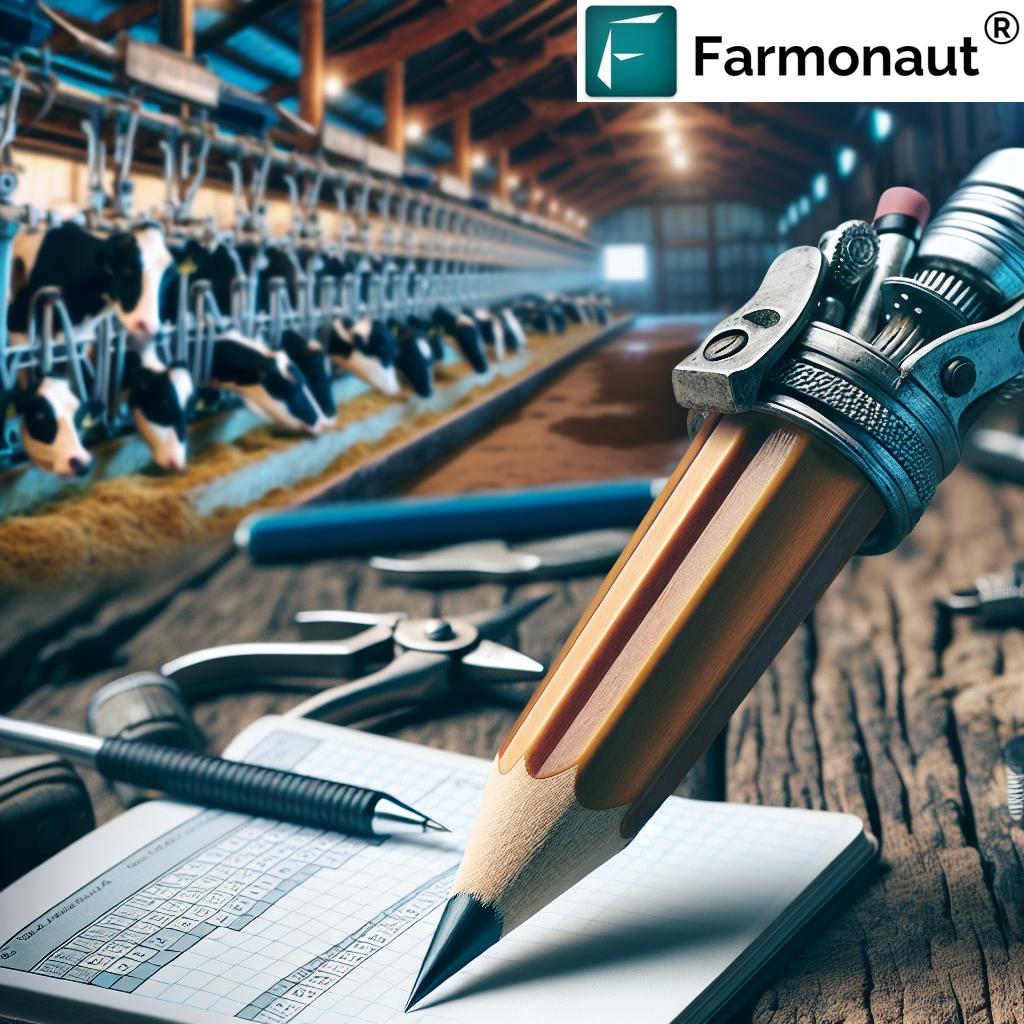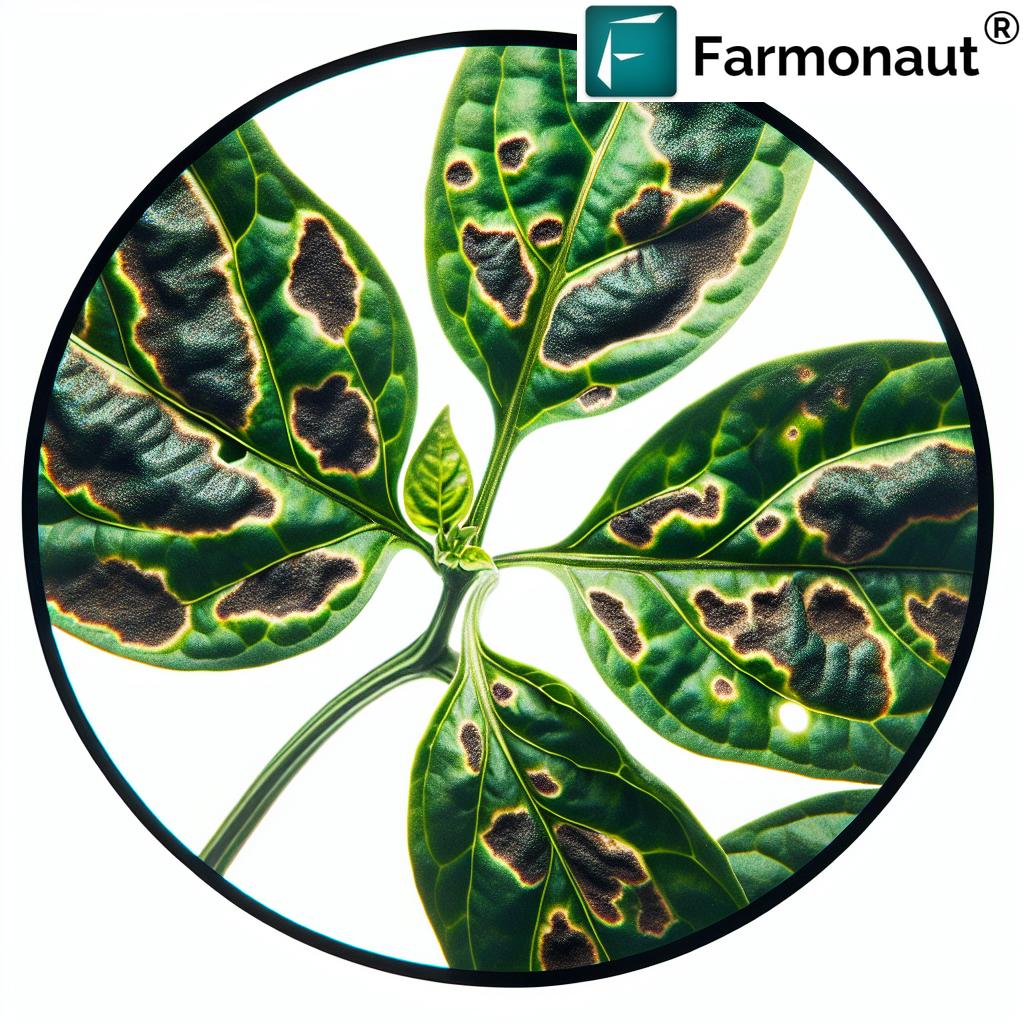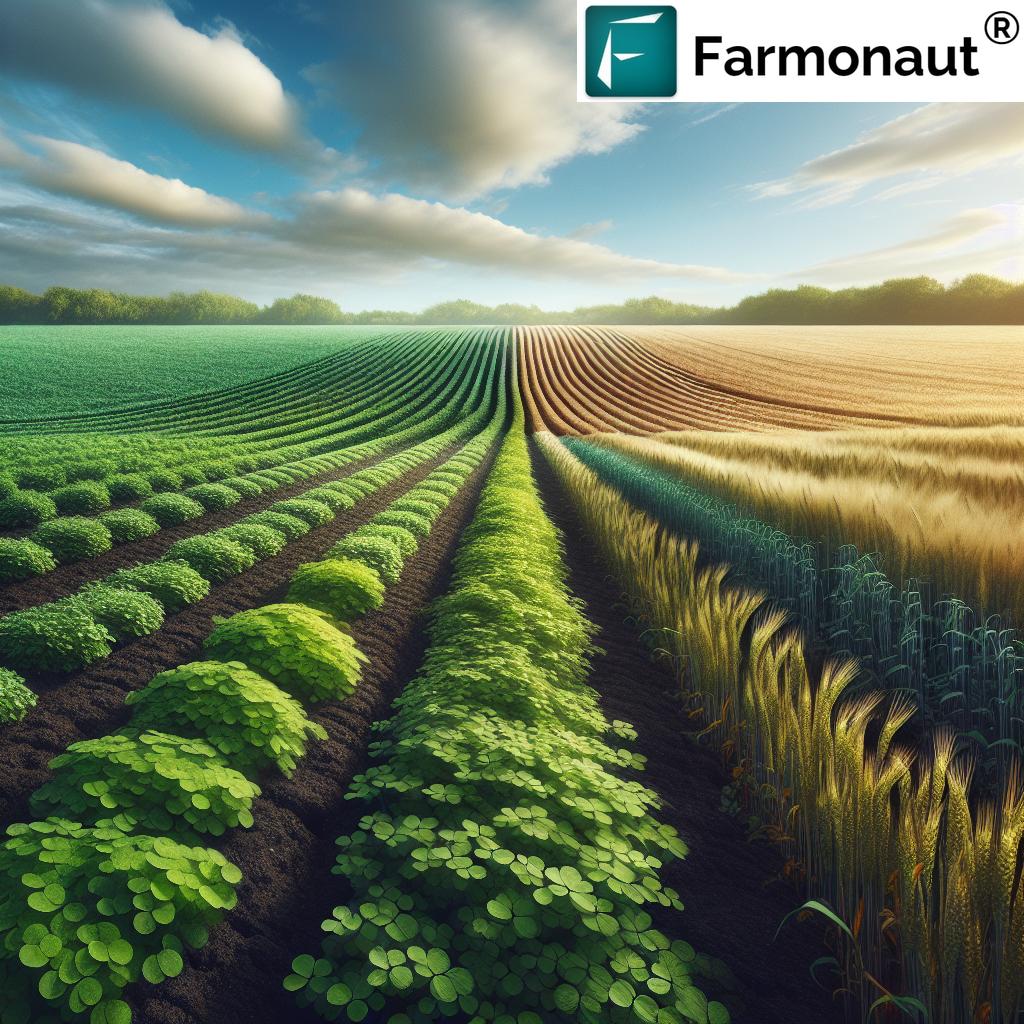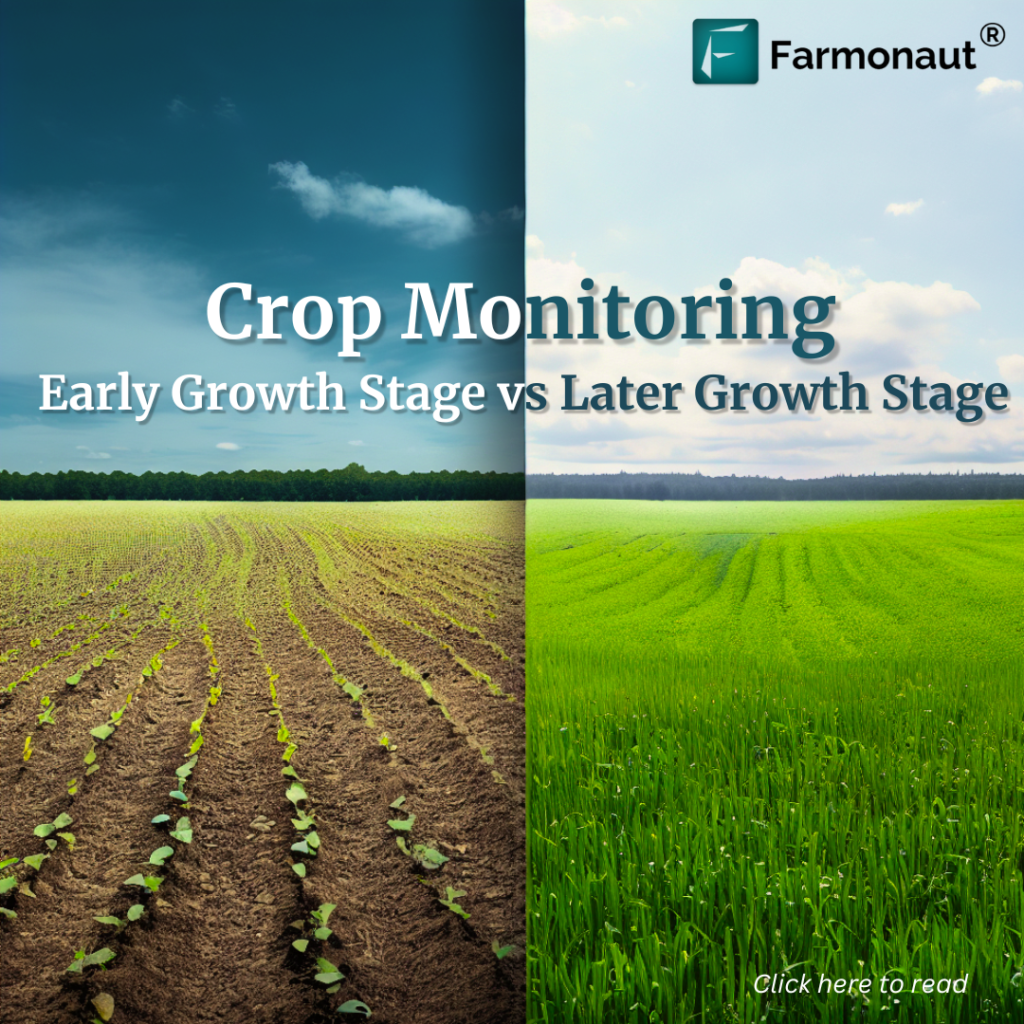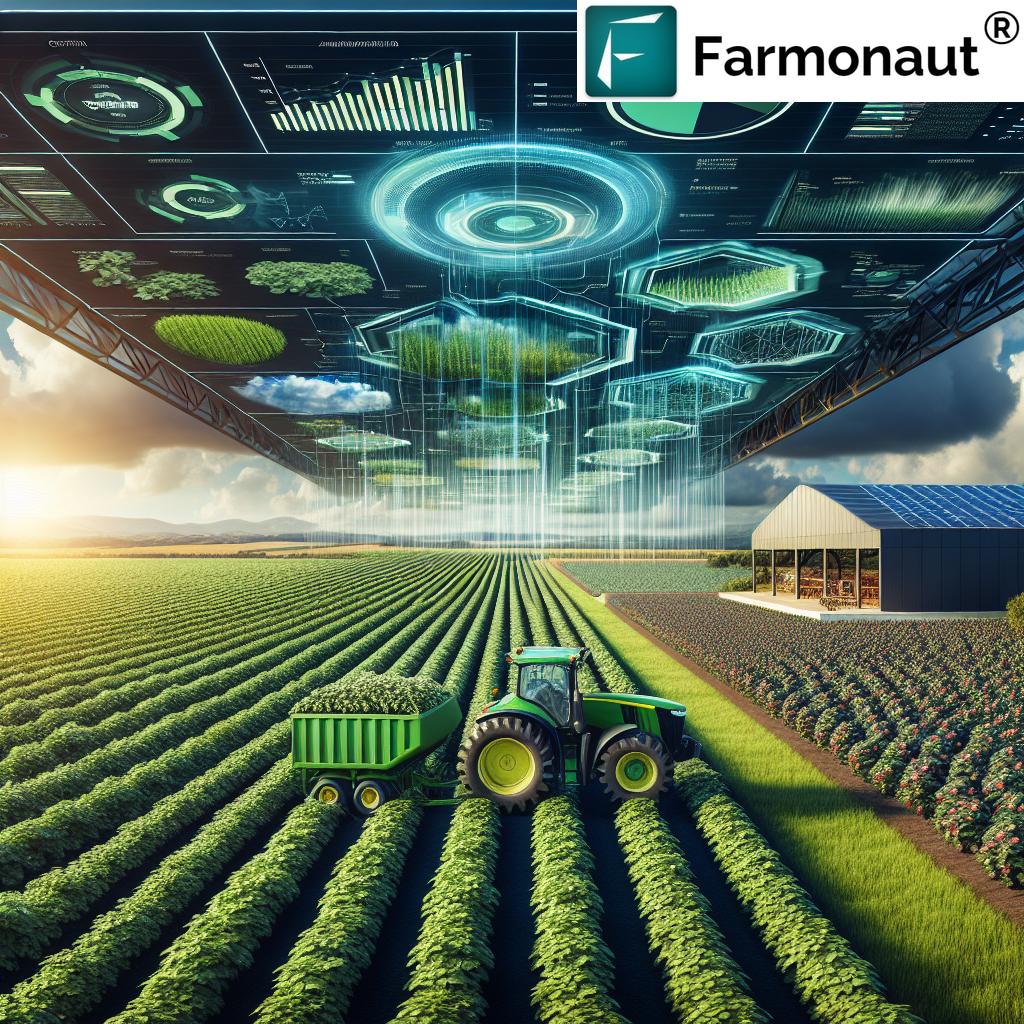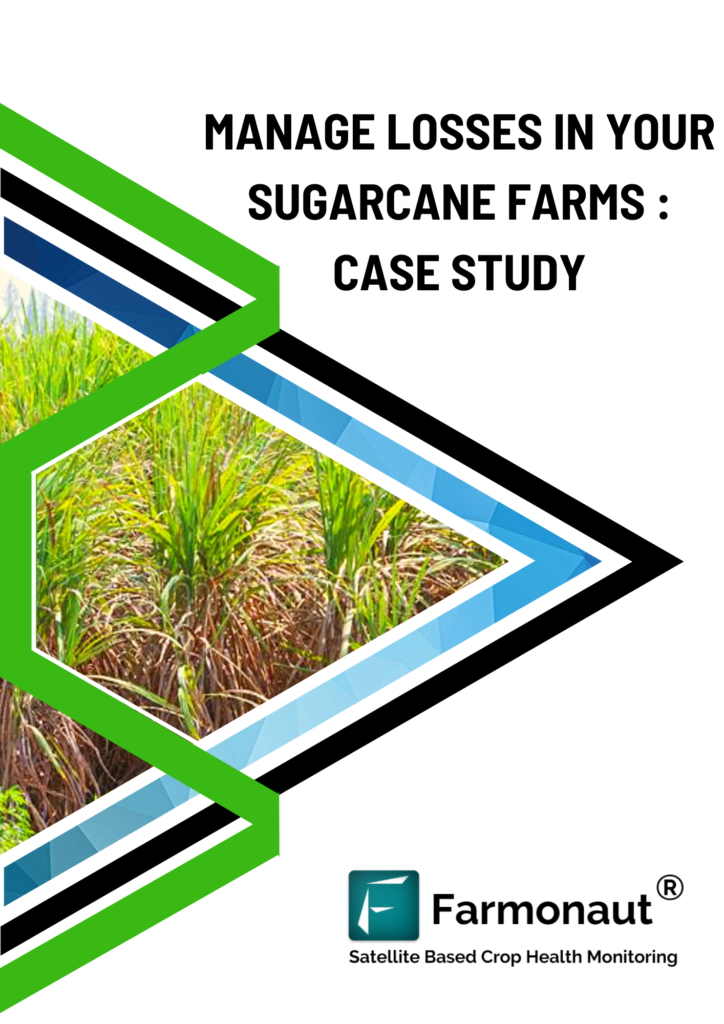Erosion Control: 10 Powerful Methods to Protect Soil & Water
Table of Contents
- Introduction: Erosion Control for Sustainable Agriculture & Forestry
- Understanding Soil Erosion
- Why Is Soil Erosion Control Important?
- 10 Powerful Erosion Control Methods to Protect Soil & Water
- 1. Vegetative Cover for Erosion Prevention
- 2. Cover Crops for Soil Health
- 3. No-Till Farming Benefits
- 4. Contour Farming Techniques
- 5. Terracing for Slopes
- 6. Buffer Strips for Water Quality
- 7. Mulching to Protect Soil Structure
- 8. Agroforestry Erosion Control
- 9. Strip Cropping
- 10. Erosion Control Mats and Blankets
- Comparative Table: Erosion Control Methods
- Implementing Erosion Control: Steps & Planning
- How Farmonaut’s Technology Facilitates Effective Erosion Control
- FAQ – Erosion Control Methods
- Conclusion
- Farmonaut Subscriptions & Further Resources
“Terracing can reduce soil erosion by up to 50% on sloped farmland, preserving both soil and water resources.”
Introduction: Erosion Control for Sustainable Agriculture & Forestry
Soil erosion is a persistent challenge farmers and foresters face in maintaining land productivity and safeguarding the environment. The displacement of the fertile topsoil layer—primarily by natural forces such as water and wind—directly reduces soil quality and decreases both crop and timber yields. At its worst, unchecked erosion results in the loss of essential nutrients, sedimentation of waterways (impacting aquatic ecosystems), compromised water retention, and increased runoff of pollutants.
As we strive to meet global food and fiber demands, implementing effective erosion control methods is not only a matter of farm business sustainability but also of environmental health. In this comprehensive guide, we will explore 10 proven ways to protect soil and water in both agriculture and forestry. We’ll discuss practical examples and demonstrate how integrating modern technology—like Farmonaut’s satellite-based solutions—makes precision farming and sustainable land management achievable for anyone, anywhere.
Understanding Soil Erosion
At its core, soil erosion is the displacement of the uppermost fertile soil layer, caused primarily by natural forces like rainfall, surface water runoff, winds, and sometimes even by human activities. The delicate balance of nutrients, organic matter, and soil structure in this fertile layer is crucial to healthy plant growth and productive land.
Main Types of Soil Erosion:
- Water Erosion: Caused by raindrops, surface runoff, rivers, and floods, leading to sheet, rill, or gully erosion.
- Wind Erosion: Most common in arid and semi-arid regions where loose soil particles are picked up and blown away by the wind forces.
- Tillage Erosion: Results from repeated farming activities—especially on slopes—shifting soil downslope and degrading structure.
Consequences:
- Loss of fertile topsoil and organic matter
- Decreased soil fertility, reducing crop yields and land productivity
- Compromised water quality due to sedimentation and runoff in waterways
- Increased pollution as sediment carries nutrients, pesticides, and other pollutants into streams
- Reduced water retention and increased flooding risk
- Negative impact on biodiversity and aquatic ecosystems
Why Is Soil Erosion Control Important?
Preventing soil erosion in agriculture, forestry, and land management is a foundational component of both short-term productivity and long-term environmental health. Here’s why:
- Maintains soil fertility: Healthy soil is rich in nutrients and organic matter required for crop growth and resilience.
- Protects water quality: Buffer strips and controlled runoff safeguard streams and aquatic systems by trapping sediments and filtering pollutants.
- Improves water infiltration and retention: Proper soil structure retains more rainfall and reduces the risk of droughts or floods.
- Enhances biodiversity and ecosystem stability: Vegetative cover supports various species and sustains both above and below-ground habitats.
- Sustains long-term land productivity: Preventing erosion preserves productive farmland for future generations and supports sustainable forestry.
10 Powerful Erosion Control Methods to Protect Soil & Water
Let’s explore and compare the most effective soil erosion control methods for agriculture, farming, and forestry. These approaches combine vegetative cover, organic amendments, innovative management practices, and tailored landforms to decrease soil loss, boost fertility, and enhance water quality.
1. Vegetative Cover for Erosion Prevention
Vegetative cover refers to planting trees, shrubs, grasses, or groundcovers to protect soil surfaces and stabilize the ground. In agriculture and forestry, this practice is an essential defense against soil displacement and organic matter loss.
- How it works: Root systems from trees and shrubs bind soil particles together, preventing detachment and movement by wind or water.
- Benefits: In addition to effective erosion control, vegetative cover increases biodiversity, improves air and soil quality, and supports healthy soil structure. A USDA study found that even 30% vegetative cover can decrease soil erosion by up to 50%.
- Best for: Riparian buffer zones, hillsides, sloping cropland, forestry operations, and any area susceptible to surface erosion.
Examples: Planting native grasses in buffer zones, establishing agroforestry systems to sequester carbon and protect fields, or maintaining permanent pasture to stabilize soil between crop cycles.
If you’re managing large tracts of land and need to monitor vegetative health over time, Farmonaut’s satellite-driven crop and vegetation monitoring can help. Their platform uses NDVI imagery to assess plant cover, identify exposed soil, and generate alerts for areas at-risk of erosion. See how you can monitor agro-forestry zones remotely.
2. Cover Crops for Soil Health
Cover crops such as clover, rye, and oats are grown during off-seasons or between primary crop cycles. Cover cropping is among the top erosion control methods for improving soil structure and preventing soil erosion in agriculture.
- How it works: Dense cover crop growth shields soil from rain impact, binds soil particles, and promotes organic matter accumulation. Their roots enhance soil structure and water infiltration. Some species also fix nitrogen, boosting fertility for future crops.
- Benefits: Cover crops decrease soil loss by nearly 40%, according to research, and improve water retention, organic carbon content, and nutrient cycling. They also reduce weed pressure.
- Best for: All fields with seasonal bare soil, especially in regions with high rainfall, sloping terrain, or after row crops.
Examples: Planting winter rye after a summer maize crop, growing hairy vetch for green manure, or inter-sowing clover among fruit orchards.
Farmonaut users can: Schedule cover cropping based on predicted rainfall, monitor coverage rates remotely, and even correlate cover crop performance to soil moisture trends detected by satellites. Learn more about optimizing your crop rotation with Farmonaut’s remote insights.
“Cover crops decrease soil loss by nearly 40%, making them a key sustainable practice in erosion control.”
3. No-Till Farming Benefits
No-till farming is a management method that involves planting crops without disturbing the soil through plowing or tillage. This technique is critical for long-term soil structure, water retention, and erosion control.
- How it works: Instead of turning the soil over, we plant directly into crop residues or undisturbed soil. This keeps organic layers intact and reduces soil particle detachment during rain events.
- Benefits: No-till farming maintains soil structure, increases water infiltration, and minimizes runoff and soil erosion. It also lowers fuel and labor costs compared to conventional tillage.
- Best for: Cropland in temperate, subtropical, and tropical regions—especially where erosion, compaction, and nutrient loss are concerns.
Examples: Direct-drilling soybeans or wheat into corn residues after harvest.
With Farmonaut, we can track changes in crop cover, residue cover, and analyze satellite-detected soil exposure between rows for real no-till compliance monitoring.
4. Contour Farming Techniques
Contour farming is the practice of plowing and planting crops along the natural contours of the land, rather than in straight lines down the slope. This soil erosion control method is highly effective on rolling or sloped land.
- How it works: Crop rows and furrows follow elevation curves, slowing water runoff and increasing infiltration as water moves more slowly across the landscape.
- Benefits: Research shows contour farming can decrease soil erosion by up to 50%. It promotes water retention, reduces the risk of gully formation, and makes best use of rainfall.
- Best for: Hilly farmlands, fields with moderate slopes, and regions prone to heavy rainfall.
Examples: Laying out maize, soybean, or small grain fields along the slope’s natural contour, alternating with buffer strips or grassed waterways for additional protection.
Monitor contour farming effectiveness by observing runoff patterns, crop canopy structure, and soil moisture trends via Farmonaut’s multispectral satellite tools.
5. Terracing for Slopes
Terracing is the construction of flat, step-like areas on steep hillsides or slopes to combat soil and water movement. Terracing remains a gold standard in erosion control for high-incline land.
- How it works: By intercepting runoff and breaking up long slopes, terraces trap water and sediment, enabling infiltration, reducing soil loss, and preventing gully formation.
- Benefits: Well-designed terracing can reduce soil loss by half. It addresses severe erosion risks on steep fields, and makes otherwise marginal land productive.
- Best for: Hillsides, hilly agricultural plots, steep pastureland, or forestry areas at risk of slope erosion.
Examples: Rice paddies in South Asia, vineyard terraces in Mediterranean climates, or stone-faced terraces in mountainous Africa and South America.
Farmonaut’s monitoring suite can help us visually assess terrace condition and detect areas of water pooling or terrace failure via up-to-date satellite imagery. Run virtual terrace inspections for large-scale land management.
6. Buffer Strips for Water Quality
Buffer strips are permanent, vegetated zones placed along waterways, field edges, or between crops and streams to trap sediment, filter pollutants, and provide habitat for beneficial organisms.
- How it works: Dense plant roots and vegetative cover slow runoff, capture suspended soil particles, and absorb nutrients before they reach streams or lakes.
- Benefits: Buffer strips protect water quality by reducing sedimentation and runoff of fertilizers and pesticides, and promote pollinator and bird habitat.
- Best for: Streambanks, drainage ditches, field boundaries, and alongside roads prone to water erosion.
Examples: Grass strips along cornfields to filter runoff, forested riparian buffers in forestry lands, or native wildflower borders in perennial farms.
Farmonaut’s platform enables spatial mapping of buffer zones and periodic monitoring of vegetative cover density for better water quality protection.
7. Mulching to Protect Soil Structure
Mulching is the application of organic or inorganic materials to the soil surface. It is a versatile practice for controlling erosion, improving water retention, and enhancing soil structure.
- How it works: Mulch acts as a protective blanket, shielding soil from raindrop impact, suppressing weeds, and decreasing evaporation.
- Benefits: Organic mulches (straw, compost, wood chips) add nutrients as they break down. Both organic and inorganic mulching reduce runoff and help maintain even soil temperatures.
- Best for: Row crops, vegetable beds, orchards, tree plantations, and disturbed soils.
Examples: Using straw mulch after planting wheat, wood chips around fruit trees, or plastic films in horticulture.
Farmers can use Farmonaut’s custom field advisory to determine optimal times for applying mulch, matched with weather and soil moisture data.
8. Agroforestry Erosion Control
Agroforestry integrates trees with crops or livestock to form a diverse ecosystem that is more stable and resilient to erosion than monocultures.
- How it works: Trees provide windbreaks, shade, and their roots stabilize the soil. Leaf litter increases soil organic matter and structure, while deeper root systems prevent landslides and surface erosion.
- Benefits: Reduces erosion on slopes, buffers wind, and provides additional income from timber, fruit, or fuelwood. Agroforestry also improves soil fertility through nutrient cycling and supports biodiversity.
- Best for: Sloping land, exposed areas, marginal soils, and diversified or regenerative farming systems.
Examples: Alley cropping trees with cereals, silvopasture (trees among livestock pastures), or perennial tree-crop mixes used in tropical agriculture.
Measure the climate impact of your agroforestry systems with Farmonaut’s carbon footprinting solutions, while mapping tree cover and crop performance over time.
9. Strip Cropping
Strip cropping involves planting alternating strips of different crops—such as hay, grains, or legumes—across fields. This method breaks up water flows and increases protective cover at the soil surface.
- How it works: Dense crops like hay or alfalfa slow water movement, trap sediment, and add organic matter. More exposed crops (like corn or soy) are protected by being planted between these strips.
- Benefits: Reduces wind and water erosion, improves nutrient cycling, and enhances microbial diversity.
- Best for: Rolling fields, dryland systems, sandy soils, or regions sensitive to wind erosion.
Examples: Alternating strips of corn (row crop) and grass/legume mixtures across Midwestern U.S. fields.
With Farmonaut’s mapping API (API access here), visualize strip cropping layouts, estimate vegetation coverage, and receive alerts for unprotected strips—perfect for research and large-scale farm management.
Also explore Farmonaut’s fleet/resource management to coordinate machinery activity efficiently across strip-cropped fields.
10. Erosion Control Mats and Blankets
Erosion control mats or blankets are biodegradable or synthetic coverings laid on bare soil, especially on slopes or disturbed sites, to provide immediate protection and promote rapid revegetation.
- How it works: These mats physically shield soil from rainfall impact and wind while holding seeds and soil particles in place until vegetation is established.
- Benefits: Excellent for slopes, recently seeded areas, forestry roads, and construction sites. They ensure fast ground cover and reduce risk of landslides or sediment loss.
- Best for: Roadside banks, gully repairs, reforestation sites, or newly graded cropland awaiting establishment.
Examples: Coconut coir mats for replanting forest slopes, jute or straw mats after riverbank stabilization, or synthetic blankets after urban construction.
Use Farmonaut’s real-time monitoring to verify mat installation, detect exposed soil patches, and schedule vegetation surveys for slope stabilization projects.
Comparative Table: Erosion Control Methods
Use the following table to compare each erosion control method based on its effectiveness, cost, complexity, environmental benefit, and ideal application.
| Method Name | Description | Estimated Effectiveness (% Soil Loss Reduction) |
Typical Application | Estimated Cost (USD/acre) | Complexity | Environmental Benefit |
|---|---|---|---|---|---|---|
| Vegetative Cover | Planting trees, shrubs, or grasses to stabilize soil and bind particles | Up to 50% | Agriculture, Forestry, Riparian Areas | $30–$200 | Low | Yes |
| Cover Crops | Growing protective crops during off-seasons for soil health | 25–40% | Agriculture | $18–$85 | Low | Yes |
| No-Till Farming | Planting without tilling, preserving residue and soil structure | 30–60% | Agriculture | $0–$30 | Low | Yes |
| Contour Farming | Plowing & planting along land contours to slow runoff | 30–50% | Agriculture, Sloped Land | $10–$50 | Medium | Yes |
| Terracing | Creating flat, step-like areas on slopes to trap water/soil | 35–75% | Steep Hills, Forestry, Global | $100–$1,800 | High | Yes |
| Buffer Strips | Planting permanent vegetation strips along waterways | 30–60% | Agriculture, Urban, Forestry | $25–$70 | Low | Yes |
| Mulching | Applying organic or inorganic material to soil surface | 20–40% | Agriculture, Horticulture | $15–$60 | Low | Yes |
| Agroforestry | Integrating trees and shrubs with crops/livestock | 30–65% | Agriculture, Forestry, Slopes | $5–$45 (establishment) | Medium | Yes |
| Strip Cropping | Alternating strips of crops to disrupt water movement | 20–35% | Agriculture | $8–$28 | Low | Yes |
| Erosion Control Mats | Installing biodegradable or synthetic mats on slopes/soil | 35–85% | Roads, Slopes, Construction | $55–$250 | Medium | Yes |
Implementing Erosion Control: Steps & Planning
No single solution fits all. Effective erosion control requires a holistic strategy—tailoring and integrating multiple methods across the landscape. Here’s how we can approach successful soil and water conservation:
- Assessment: Identify site characteristics—soil type, topography, rainfall patterns, crop or tree species, previous erosion signs, and waterway positions using both on-ground and satellite-based land analysis tools.
- Planning: Match methods to field risks. For example, implement contour farming on sloping land, plant buffer strips near streams, or select cover crops for exposed periods.
- Execution: Time interventions to the cropping calendar (like sowing cover crops post-harvest), install erosion mats before rainy seasons, or apply mulch after planting to catch early runoff.
- Monitoring: Continuously evaluate effectiveness—measure soil loss, inspect vegetative cover, or use Farmonaut’s crop and land health monitoring to spot erosion symptoms (bare ground, rills, or yellowing crops as signs of nutrient loss).
- Adjust and Improve: Refine your approach based on results. Replace failed mats, reseed buffers, or diversify crop strips as needed.
How Farmonaut’s Technology Facilitates Effective Erosion Control
Modern technology empowers us to plan, implement, and monitor soil erosion control more efficiently than ever before. Farmonaut—an agricultural technology leader—provides advanced satellite-based farm management tools compatible with Android, iOS, web apps, and API integrations. Here’s how their solutions elevate soil and water conservation:
-
Satellite-Based Crop Health & Soil Monitoring:
Harness high-resolution, multispectral imagery to monitor vegetation health (NDVI), soil exposure, and moisture variations. This is vital for pinpointing at-risk areas where vegetative cover is thin or erosion is underway. -
AI-Driven Advisory System (Jeevn AI):
Receive real-time, field-specific tips on planting schedules, cover crop selection, mulching strategies, and more. Get alerts on erosion risks based on rainfall intensity or crop canopy health. -
Blockchain Traceability:
Ensure transparency for organic and regenerative crops benefiting from erosion prevention, with full traceability from planting to harvest. See how traceability can enhance your farming reputation. -
Fleet & Resource Management:
Organize planting and maintenance operations—like mulch application, buffer strip mowing, and terrace maintenance—across your fields for maximum efficiency. Explore resource management › -
Carbon Footprinting for Sustainable Practices:
Quantify the positive environmental impact of your erosion control measures. Demonstrate carbon sequestration from vegetative cover, agroforestry, and reduced tillage. Learn about carbon tracking benefits › -
Scalable Support:
Farmonaut’s platform supports everyone from smallholders to government farm management schemes. Monitor fields, forests, and buffer zones remotely, diagnose problems early, and prove environmental compliance.
Get started instantly with Farmonaut:



Or integrate Farmonaut’s APIs into your organization or research platform. Read the API developer docs here.
FAQ – Erosion Control Methods
-
Q: What is the best erosion control method for slopes?
A: Terracing and contour farming combined with permanent vegetative cover are the most effective for steep or hilly land. These methods reduce runoff velocity, enhance water infiltration, and prevent landslides. -
Q: How do cover crops help in soil erosion control?
A: Cover crops protect soil from rainfall impact, improve soil structure, increase organic matter, and enhance water retention—all of which decrease soil displacement. -
Q: Can technology help monitor erosion prevention measures?
A: Yes! Farmonaut enables satellite-based monitoring of vegetative cover, soil moisture, and land use, sending alerts about risks or non-compliance in erosion-prone areas. -
Q: Are there eco-friendly (organic) solutions for erosion control?
A: Absolutely! Practices like cover cropping, organic mulching, and agroforestry not only prevent erosion but also boost soil health and biodiversity. -
Q: What’s the difference between buffer strips and vegetative cover?
A: Buffer strips are targeted vegetative zones—usually along watercourses—to filter runoff and trap sediment. General vegetative cover can include whole-field plantings or natural grassland restoration. -
Q: Where can I find more information on advanced, technology-powered erosion management?
A: Explore Farmonaut’s apps and documentation here for resources on satellite-aided erosion prevention and land management.
Conclusion
In the face of climate variability and growing agricultural demand, controlling soil erosion is crucial for sustaining fertile land, healthy crops, and clean waterways. By embracing a comprehensive, multi-method approach—integrating vegetative cover, cover crops, no-till farming, terracing, and new technologies—we can decrease soil loss, enhance fertility, and promote resilient ecosystems.
Farmonaut brings next-generation, precision-farming capabilities within reach of every farmer, land manager, and forester. Their affordable, satellite-driven solutions make it possible to monitor, manage, and verify erosion control from anywhere in the world. Start your journey toward sustainable, productive, and environmentally responsible land management today!
Farmonaut Subscriptions & Further Resources
Ready to monitor your fields, track vegetative and crop health, or design better soil erosion control methods across your operation? Get started with Farmonaut’s Web App now or download the Android or iOS mobile apps:
We’re committed to providing farmers, foresters, and agribusinesses—large and small—with the tools and knowledge to protect their most valuable resource: the soil. Harness the power of erosion control methods, leverage cutting-edge technologies, and join us in making agriculture and forestry more sustainable, productive, and environmentally friendly.


